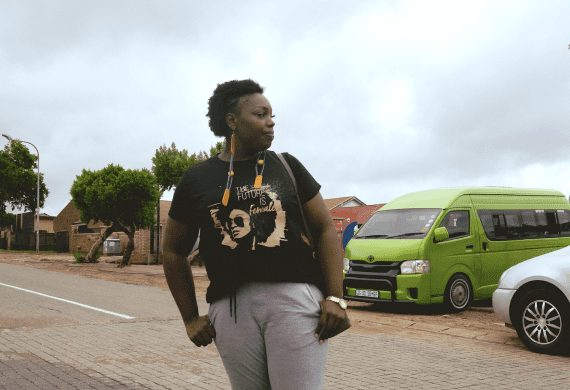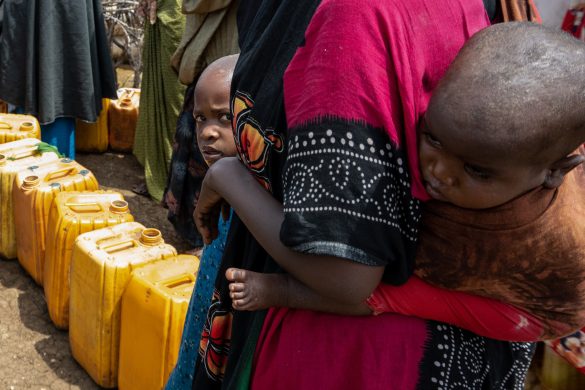Mozambique Growth Showcased at Development Aid Meeting
MAPUTO 25 June: Before Nelia Mangate had a cell phone (mobiltelefon), it was not easy for her to communicate with clients far away from her shop in Maputo, Mozambique. A letter might take five or six days to get to its destination.
– But now I can have an immediate answer. Even if I do not have air minutes, I can still send an SMS (Short Message Service), says Mangate.
Only eight Mozambicans out of 1.000 owned a phone three years ago. But service costs dropped after reforms supported by the World Bank opened the market to competition, and access has increased dramatically.
The growing use of cell phones in Mozambique – up to 2 million subscribers in 2007 from 51.000 in 2001– symbolizes some of the positive changes taking place in this high-growth, low-income Southern African country.
Those changes include reducing poverty from 70 percent to about 50 percent since 1997, sending almost 2 million more children to school, increasing exports by 20 percent a year for the last 10 years, reducing child mortality by 35 percentage points since 1990, and doubling access to safe water.
This week, Mozambiques success – and lingering poverty – provides the backdrop for a meeting of international donors in the capital of Maputo.
Donors from 42 nations and representatives from 12 borrowing countries assess the needs of the worlds poorest countries being helped by the International Development Association (IDA), the arm of the World Bank that extends grants and zero-interest loans (known as credits) with 35-40-year repayment schedules.
Some countries, like Mozambique, have made impressive gains in recent years, though they still face daunting challenges.
Others depend heavily on IDA as their largest single source of financing, especially because they do not benefit from the record levels of foreign capital flowing to higher-performing countries in the developing world.
IDA as Linchpin
World Bank Country Director for Mozambique Michael Baxter described IDA as a “linchpin” (omdrejningspunkt) in development assistance to Mozambique.
IDA is the largest of about 30 donors in the country, disbursing 20 percent of all overseas development assistance. New IDA commitments will amount to 155 million US dollar annually under a new country partnership strategy that takes effect in July.
– Historically the World Bank, through IDA, has been a very key donor for Mozambique for over 20 years both in terms of resource transfer and policy support, says Baxter.
Prime Minister Luisa Diogo says IDAs assistance was critical to the countrys rebuilding after the long-running civil war, which ended in 1992 with the signing of a peace agreement.
– We could not have rebuilt essential infrastructure after the peace agreement without the support from IDA. We used to depend heavily on food aid and now we are almost self sufficient in food production, the Prime Minister says.
Mozambique still needs international aid and has not fully recovered, says Baxter. But with an average annual growth rate of 8 percent over the last decade, it is also Africas fastest growing non-oil-producing country.
Some of the growth can be attributed to the joint IDA, International Finance Corporation and Multilateral Investment Guarantee Agency Mozal Aluminum Smelting Project, the largest foreign investment in Mozambiques history.
Mozal created 15.000 jobs, mostly for Mozambicans, during both phases of its construction, and currently employs 1.150 permanent staff, 1.600 contractors, and 10.000 people indirectly through locally owned contractor firms.
It is also credited with attracting foreign investment into Mozambique and contributing 3 percent of GDP and 5-10 percent of recent economic growth.
Growth helped lift incomes to 340 US dollar per capita, and free 3 million people from extreme poverty between 1997 and 2003.
On Track to Poverty MDG
Mozambique is on track to meet the Millennium Development Goal of halving poverty by 2015, though the country remains one of the poorest in the world, says Baxter.
– The challenge is bringing the poverty rate further and further down, and generating more employment for a large number of people, he notes.
IDA and Mozambiques other donors support the FRELIMO-governments own poverty reduction plan, meaning funds go to sectors the government has deemed the highest priority in fighting poverty and providing services.
Top development concerns include infrastructure, agriculture, and HIV/AIDS in a country with a 16 percent infection rate.
In addition, Mozambique ranks 140th out of 175 countries in the ease of doing business, according to the World Bank Groups Doing Business report. Several initiatives are underway that should improve the business climate in the former Portuguese colony, says Baxter.
Baxter notes that Mozambique is making good progress towards its development goals but still faces hard challenges. In addition to the serious threat of HIV/AIDS, governance issues pose a significant risk to growth, especially growth that is more broadly shared.
He says the newly approved country partnership strategy, which will run from July 2007 through June 2011, “seeks to help the government improve its basic functions ranging from planning and financial management to facilitating private business”.
– This will not only lead to better investments and better delivery of public services, but will also encourage greater accountability for how those public resources are used. These are essential elements for long-term growth that will benefit all citizens, says Baxter
Not Only Money
– It is not always easy to agree on the impact of growth in peoples lives, Adriano Maleiane, former Governor of the Central Bank of Mozambique, said early this year.
– However, the undeniable fact is that today there are more schools, hospitals, more potable water, and more economic activity than during the war period, explained he.
He said the World Banks participation in Mozambique, through IDA, demonstrated confidence in the country, encouraging investors and the other partners to “establish better relationships and coordinated support to the country.”
– IDAs mix of finance and knowledge evolved over time in Mozambique, says Jorge Araujo, Lead Economist for the Resource Mobilization Department at the Bank and task team leader for the IDA15 paper, The Role of IDA in the Global Aid Architecture.
– It is not only the money, but it is money associated with knowledge and expertise, and expertise that really draws on IDAs unique feature of being a global multilateral development bank, Araujo said, adding:
– Basically, because IDA supports a country-driven approach to development aid, it tailors its assistance to country needs and priorities, and also to the characteristics of the country.
Kilde: www.worldbank.org















